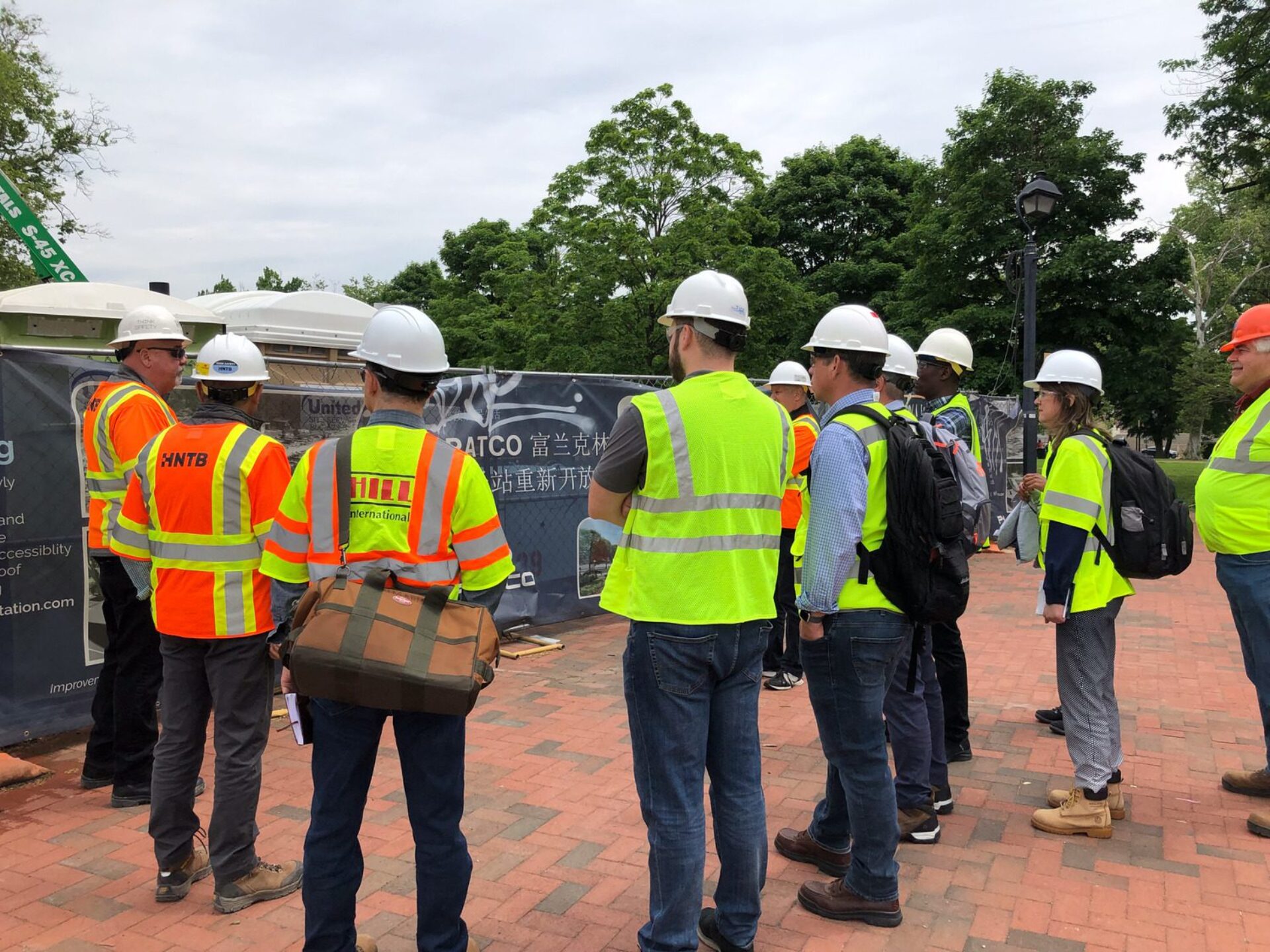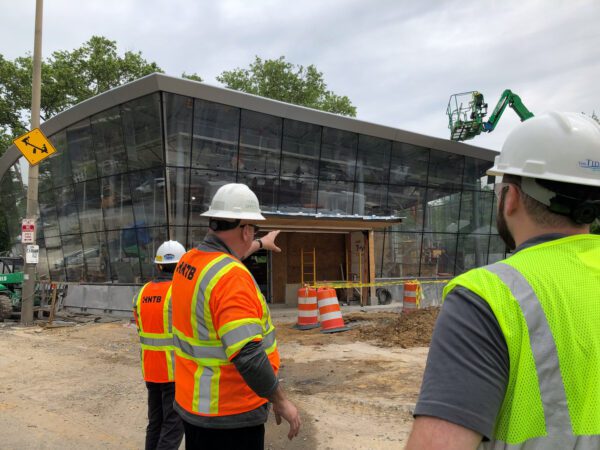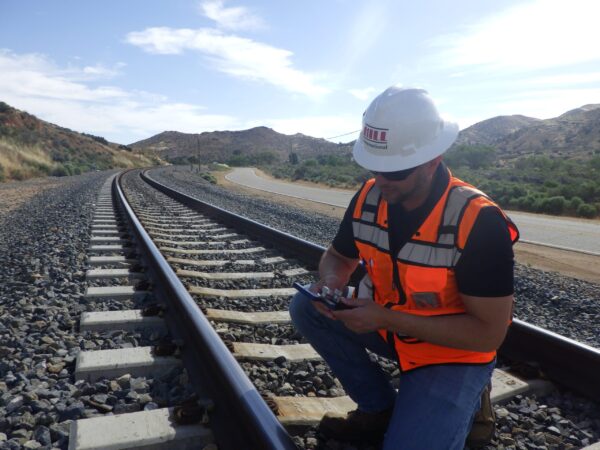
March 12, 2025 | Articles
Get Stoked: Hill International Makes Big Waves in Spain’s Surfing Scene

In 1985, Hill International, Inc.’s founder Irvin Richter conceptualized project management oversight (PMO) services as a way to standardize project monitoring across a portfolio of construction projects. Governing management capacity, project processes and controls, resource allocation, continuous improvement, accountability, and more, PMO services help ensure consistent, effective management and technical oversight throughout a project portfolio. This oversight promotes compliance with organizational and regulatory requirements and the successful delivery of projects.
As its focus is on monitoring, PMO benefits organizations that fund—but do not necessarily directly manage—multiple, concurrent construction projects. In fact, Richter conceived of PMO in response to the need for a formal, organized set of project monitoring standards at U.S. Federal Government agencies like the Federal Transit Administration (FTA).
After launching the new service, Hill helped the FTA establish their original PMO guidelines in 1985. Since then, our teams have continuously provided PMO services to the FTA, supplementing the agency’s oversight staff on public transportation projects throughout the U.S. A recent example, under our eighth consecutive PMO task order contract with the FTA, is Hill’s PMO services on an FTA-funded project to reopen Franklin Square Station in Philadelphia, PA.
A Legacy at Franklin Square
Franklin Square Station is an existing but non-operational underground station on the Delaware River Port Authority’s (DRPA) Port Authority Transit Corporation (PATCO) Speedline, a rapid transit system that runs from Center City Philadelphia to Lindenwold, NJ. The easternmost stop in Pennsylvania, the station is located at 7th and Race Streets beneath the popular Franklin Square Park. Franklin Square Station originally opened in 1936 as one of the four stations associated with the Philadelphia Rapid Transit-operated Bridge Line—the precursor to PATCO’s Speedline. Since then, the station has opened and closed multiple times. It last served passengers in 1979.

According to the Philadelphia Inquirer, the DRPA has considered reopening the station since 2002. Because of ongoing residential and commercial development taking place around Franklin Square, DRPA began putting plans into action in 2016 and awarded the project’s first contract, a $2 million design and bid specification contract, in 2017. Commuters from New Jersey will be able to access popular Center City areas like Chinatown, Old City, and Callowhill from the reopened station, while Philadelphia residents around Franklin Square can use the PATCO Speedline to reach destinations throughout South Jersey and even as an alternative to the Southeastern Pennsylvania Transportation Authority’s (SEPTA) Market-Frankfort Line or bus service.
Since the station has not served passengers in more than 40 years, DRPA’s $30 million project includes a number of upgrades to improve the station’s civil, structural, mechanical, electrical, life safety, and security systems and bring the station into compliance with the Americans with Disabilities Act (ADA). New features include an elevator, an escalator, ADA-compliant ramps, non-slip flooring, and guardrails located at the bottom of ramps to protect passengers descending onto the platforms; a main headhouse with a green roof and green wall to manage stormwater and condition the interior, as well as a skylight and transparent walls to admit sunlight and give end-users views of the park; and emergency egress headhouses for the westbound and eastbound platforms. Other upgrades include new signage, landscaping, and the refurbishment of the station’s classic wall tiling, which matches tiling found in many of Philadelphia’s underground stations such as City Hall Station on the Broad Street Line.
While passengers will enjoy these new features first-hand, one of the project’s most important scope items will go unseen. Prior to the project, a 36-inch water main from the early 1900s ran directly through the project site—right where the DRPA’s team planned to build the new headhouse’s stairs and escalator. To make space for the new station entrance, the team relocated the water main under 7th street.
The PMO Advantage
Funding for the project came from the FTA’s Better Utilizing Investments to Leverage Development (BUILD) Discretionary Grant program—formerly known as the Transportation Investment Generating Economic Recovery (TIGER) Discretionary Grant program and currently known as the Rebuilding American Infrastructure with Sustainability and Equity (RAISE) Discretionary Grant program. To promote project delivery in line with BUILD and overall FTA requirements, the FTA assigned Hill to provide PMO services for the Franklin Square Station project.

“As the FTA’s representative we’ve been working with the FTA and DRPA to overcome the project’s management and technical challenges,” says Hill Vice President Reza Mohammadinia, who supports multiple projects under Hill’s PMO contract with the FTA. For example, Reza references the DRPA project team’s intensive coordination with a variety of city, state, and Federal agencies. To complete the water main relocation, the team had to coordinate closely with the Pennsylvania Department of Transportation and the Philadelphia Department of Water. To plan site safety and keep the public informed about impacts to scheduled events in the park, the team had to coordinate with Historic Philadelphia, Inc.—the non-profit organization responsible for the stewardship of Franklin Square and other historic sites in Philadelphia. To plan and implement the interstate station’s security features, the team coordinated with the U.S. Department of Homeland Security. This coordination required sufficient management capacity to prevent delays.
“Aside from coordination, the water main relocation involved risks associated with street closures and traffic control,” Reza adds. “As PATCO trains continued to pass through the station for the duration of the project, the team also had to contend with the heightened safety risk associated with working along active train lines.”
Hill has continued to provide monitoring and reporting services to confirm that work is progressing within budget and in accordance with approved plans, specifications, and BUILD and FTA requirements. Hill has also provided regular oversight to promote timely and appropriate responses to emergent unknown risks in line with FTA best practices. This helps keep the FTA abreast of project conditions and helps the DRPA team overcome the project’s major challenges.
Public Transit Done Right
Most of the station’s structural work is now complete, and the DRPA’s project team has commenced integration of the station’s new systems and other final works. With commissioning and closeout on the horizon, the Franklin Square Station project is on track to reach substantial completion within budget by the end of 2024. Upon its grand reopening, Franklin Square Station will be the first station added to the PATCO Speedline in 44 years, bringing the total number of stations to 14.
“This has been a great project,” concludes Reza. “In addition to helping expand public transit options for thousands and contributing to the development around Franklin Square, it’s also an example of what can be accomplished when an entire team comes together to execute their project right.”
With our dedicated PMO support, we are proud to help the FTA make certain their sponsors’ project teams have the capacity, project management tools, and technical expertise needed for compliant and successful project delivery. To learn more about the Franklin Square Station project, reach out to Reza at [email protected]. To learn more about Hill’s PMO services, please visit www.hillintl.com or reach out to Hill Vice President Mike Radbill at [email protected].
Share

March 12, 2025 | Articles
Get Stoked: Hill International Makes Big Waves in Spain’s Surfing Scene

March 9, 2025 | Articles
Project Manager TJ Pinales: Helping Along the Road in San Antonio

March 4, 2025 | Articles
Balancing the Equation: An Interview with Project Manager Tracy Wiyrick

March 1, 2025 | Articles
A Lifelong Project: Calypso Kyriakopoulou’s Multifaceted Career in Construction

February 10, 2025 | Articles
Dual Delivery: A Viable Strategy for Complex Transit Projects

January 23, 2025 | Articles
Plotting a Roadmap to Success on the Torres de Colón Renovation

December 12, 2024 | Articles
Progressive Design-Build for Rail and Transit Projects: Room to Run

December 9, 2024 | Articles
Unlocking Growth: Maximizing the Benefits of the SBA’s Mentor-Protégé Program

December 8, 2024 | Articles
Mediterranean Luxury a Century in the Making: Four Seasons Resort Mallorca at Formentor